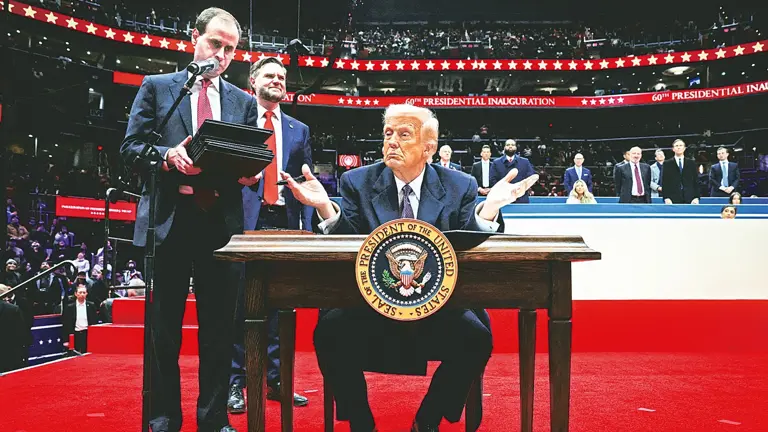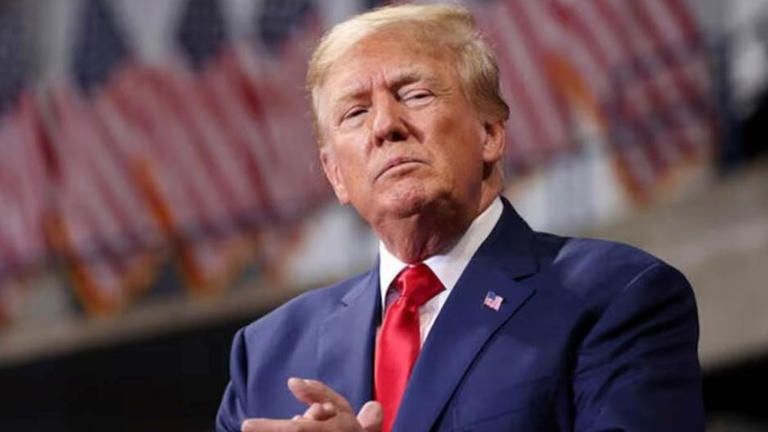US Aluminium Tariffs Threaten India’s $1-Billion Aluminium Exports: What It Means for the Industry
The United States has long been the top export market for Indian aluminium, but with new US aluminium tariffs set to take effect from March 12, Indian aluminium exporters are bracing for a significant impact. The Trump administration’s decision to raise tariffs from 10% to 25% on aluminium imports threatens nearly $1 billion worth of exports, potentially disrupting India’s momentum in the aluminium sector.
While India accounts for only 3% of total US aluminium imports, it holds a dominant position in supplying aluminium conductors, wires, and cables, particularly for the rapidly growing US power infrastructure sector. The new US aluminium tariffs, which cover a wider range of semi-finished and finished aluminium products, may pose serious challenges for Indian exporters and raise concerns over long-term trade relations with the US.
How Much is at Stake for India’s Aluminium Exports?
📈 In 2023-24, India’s aluminium exports to the US were valued at $946 million (Rs 7,831 crore), after surpassing $1 billion in the previous two financial years.
📊 India has seen rapid export growth, with shipments rising from $350 million in 2016-17 to nearly $1 billion today. The US aluminium tariffs, however, now pose a significant threat to this expansion.
Breakdown of US Aluminium Imports from India (2024)
✅ Aluminium Conductors (Wires & Cables) – $130 million (38% of total US imports in this category).
✅ Unwrought Aluminium – $185 million.
✅ Nails & Fasteners – $107 million.
✅ Aluminium Wire – $98 million.
✅ Aluminium Tube & Pipe Fittings – $16 million (26% of total US imports in this category).
Despite the US aluminium tariffs, exports of aluminium conductors from India had been rising, reaching $261 million in 2023, up from just $40 million in 2021, reflecting strong demand for Indian aluminium products in the US market.
Why Are the New US Aluminium Tariffs a Bigger Concern Than Before?
This is not the first time the US has imposed tariffs on aluminium imports.
📌 In 2018, the Trump administration introduced a 10% tariff on aluminium and a 25% tariff on steel, arguing that it was necessary to protect American manufacturers. However, many countries received exemptions, making the tariffs less effective.
📢 The new 25% US aluminium tariffs in 2024 are far broader and stricter, covering more semi-finished and finished aluminium products. This means India’s aluminium exports will face even greater restrictions than in 2018.
🚨 Key Differences Between 2018 and 2024 US Aluminium Tariffs:
✔ Broader Scope: The new US aluminium tariffs cover semi-finished and finished aluminium products, not just raw materials.
✔ Stricter Enforcement: The White House has tightened loopholes that previously allowed some countries to bypass tariffs.
✔ More Countries Affected: Unlike 2018, no exemptions have been announced yet, meaning India and other aluminium exporters will face stronger restrictions.
Impact of US Aluminium Tariffs on Indian Aluminium Producers & Exporters
According to CareEdge Ratings, the impact of these US aluminium tariffs on India’s aluminium industry will be greater than on its steel industry.
📉 Why Aluminium Exports Will Suffer More Than Steel
✔ India exports 40% of its total aluminium production, meaning a significant portion of the industry relies on overseas markets.
✔ Direct aluminium exports to the US account for 6-8% of India’s total aluminium exports, making the US a critical buyer.
✔ The higher US aluminium tariffs could reduce export volumes and profitability for Indian manufacturers.
Meanwhile, the impact on India’s steel industry is expected to be less severe, as the US accounts for only 4% of India’s total steel exports. However, indirect effects could still hurt steelmakers.
🚨 Possible Spillover Effect on Steel Industry:
✔ If China faces restrictions on exporting steel to the US, it may divert excess supply to India, increasing competition and lowering steel prices domestically.
✔ This could put downward pressure on prices and profitability for Indian steel producers.
What Can India Do to Mitigate the Impact of US Aluminium Tariffs?
With the US tightening trade restrictions, India must consider alternative strategies to protect its aluminium industry.
✅ Key Measures India Can Take:
1️⃣ Negotiate for Tariff Exemptions or Lower Duties
✔ India must lobby for exemptions, similar to those granted to Canada, Australia, and Japan in 2018.
✔ If a full exemption is not possible, negotiating for lower tariffs on certain products could help minimize damage.
2️⃣ Strengthen Domestic Demand for Aluminium
✔ Increasing government investment in infrastructure and electric grid expansion could boost local demand for aluminium, reducing dependence on exports.
3️⃣ Diversify Export Markets Beyond the US
India should explore expanding aluminium exports to other fast-growing markets, including:
✔ European Union – Heavy investments in green energy projects.
✔ Southeast Asia – Rapid infrastructure development.
✔ Middle East & Africa – Growing demand for construction materials.
4️⃣ Invest in Value-Added Aluminium Products
Instead of exporting raw aluminium, India could focus on manufacturing high-value aluminium products, such as:
✔ Electric vehicle (EV) components.
✔ Aerospace materials.
✔ Advanced electrical conductors for smart grids.
This would help reduce vulnerability to US aluminium tariffs and increase profitability.
Final Thoughts: Can India’s Aluminium Industry Withstand US Aluminium Tariffs?
With the US being India’s top aluminium export market, the new 25% US aluminium tariffs pose a major challenge. However, the overall impact may be limited, as aluminium exports account for a small share of most Indian companies’ revenues.
📌 Key Takeaways:
✔ India’s aluminium exports to the US stand at nearly $1 billion, with conductors being the biggest contributor.
✔ The new 25% US aluminium tariffs cover more products than previous duties, making exports harder.
✔ Indian aluminium manufacturers are more vulnerable than steel producers, as a larger portion of their output is exported.
✔ Diversifying trade partners, increasing domestic demand, and negotiating exemptions will be crucial to minimize losses.
India’s aluminium sector has weathered US tariffs before, and with the right strategies, it can adapt and continue its growth trajectory.
🌎 Will India find alternative markets to offset the impact of US aluminium tariffs? The coming months will be critical.







